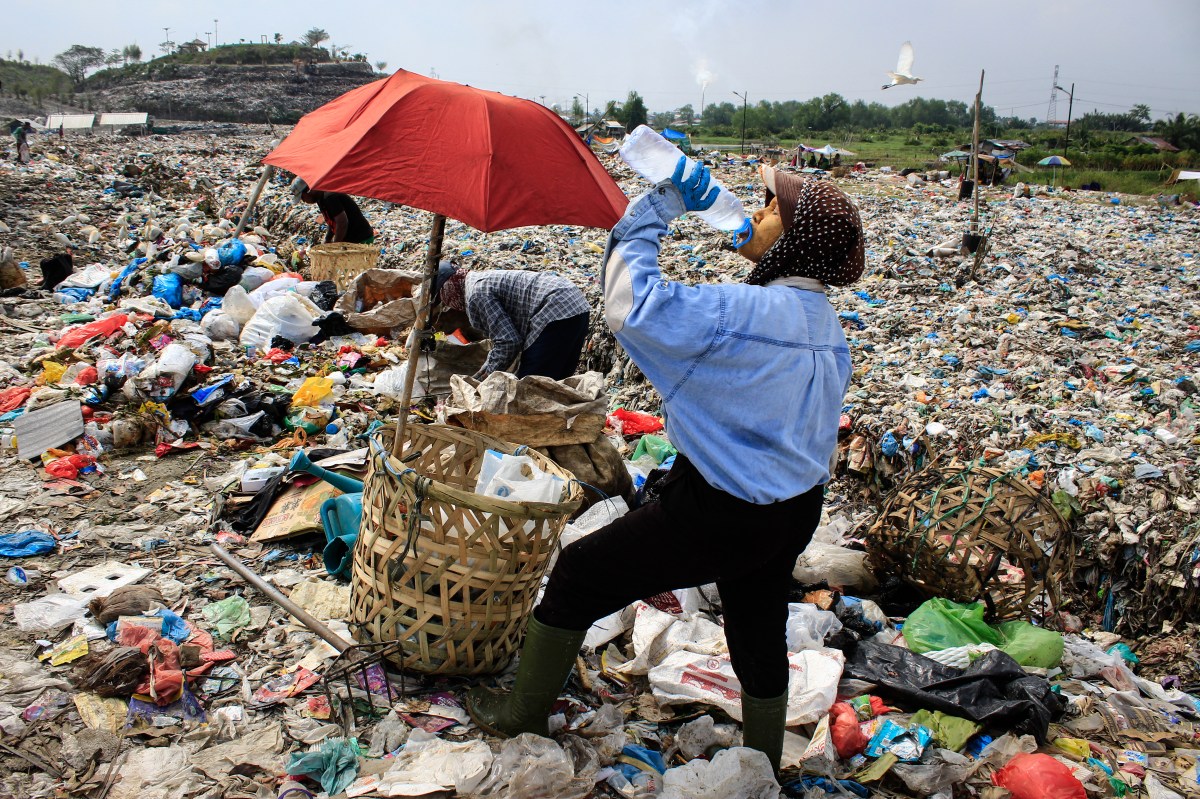World
Can a treaty undo the world’s plastic problem? – Marketplace

Creating a global treaty on plastic isn’t easy, but the U.S. and other United Nations members are getting closer. They’re negotiating a legally binding agreement to dramatically reduce plastic pollution and waste, and the fourth round of talks ended this week. Their goal is to wrap it up this year, so where’s the holdup?
The most ambitious ideas are also the most controversial, especially whether the treaty will cap plastic production worldwide. Environmentalists and more than 90 countries known as the High Ambition Coalition argue that the pact would be all but useless without one. Rwanda and Peru on Monday proposed a 40% reduction in global plastic production by 2040, using 2025 as a baseline. No specific numbers have made it into the treaty draft thus far.
Plastic producers and countries like Saudi Arabia and China oppose including production limits. They want the treaty to focus on “circularity” — policies that would, for example, improve recycling technology or incentivize companies to rethink product design — rather than impose hard limits. Only about 9% of the plastic ever made has been recycled. The rest gets incinerated or ends up in landfills.
The treaty could also ban certain chemicals from plastic production due to the risks they pose to human health. Researchers have already found microplastics in lungs, the bloodstream, even placenta cells, and linked microplastic exposure to multiple negative health effects. One recent study found that many of the chemicals in everyday products made with plastic, including flame-retardant fabrics, shampoo and nonstick cookware, contributed about $250 billion to Americans’ health care costs in 2018.
If nothing changes, the problem will only get worse. Plastic production is expected to triple by 2060, something we covered in depth on “Make Me Smart” last year.
Smart in a Shot
Jerry Seinfeld can’t explain what makes Pop-Tarts funny. He just knows that they are. So much so that the comedian decided to write, direct and star in “Unfrosted,” about the legendary shelf-stable toaster pastry. The film is an absurdist tale about the competition between two corporate giants, Kellogg’s and Post, in the breakfast food arena.
It’s also highly inaccurate, we should add — Seinfeld estimates about 4.6% of the plot is true. The film is out on Netflix today.
You could argue that the “product as protagonist” trend in films started a decade ago with “The Lego Movie” and peaked, so far, with “Barbie.” Both are Technicolor fantasies. Other mid-budget modern films like “Air,” “Tetris” and “BlackBerry” don’t typically portray corporations or their leaders as righteous or fair. Their plotlines all focus on a lovable maverick, usually a lower-level employee or outsider, who overcomes the doubts of corporate overlords. But when the credits roll, the product almost always comes out the clear winner. In the end, nostalgia is a powerful marketing tool.
Unlike toy manufacturer Mattel, which financed and produced “Barbie,” Kellanova, the company behind the Pop-Tarts brand, — Kellogg separated its snack foods business from its cereal business last year — didn’t approve or get involved in “Unfrosted.” But it still created a whole marketing campaign around the film. It wants in on the joke and money that could be made as a result.
The Numbers
Poverty is down, but more households have fallen into an economic limbo that’s described as “asset-limited, income-constrained, employed.” Translation: They make too much money to qualify for government assistance but struggle to afford the essentials.
Let’s do the numbers on “ALICE.”
$31,200
A family of four bringing in $31,200 or less a year is considered poor by the federal government. For an individual, the poverty income threshold is $15,060. Most federal and state subsidies, like Medicaid and SNAP, or the Supplemental Nutrition Assistance Program, use these thresholds to determine eligibility and benefits.
11.5%
About 11.5% of people in the U.S. were living at or below the federal poverty line in 2022. That’s down from a decade prior, but it is also likely an undercount because it doesn’t account for the varied cost of living around the country.
29%
The portion of American households considered ALICEs by United Way, which coined the term. This framework compares a household’s earnings to the cost of food, transportation, child care, health care, housing and a smartphone plan in the area.
3.3%
United Way found that prices for these essentials increased at a higher rate every year from 2007 to 2023 — 3.3% on average — than the consumer price index, which rose 2.5% on average during that same period.
Check out this interactive data visualization to see what financial hardship looks like in your county and how it compares to the rest of the country.
None of Us Is as Smart as All of Us
Tell us what’s making you smarter at smarter@marketplace.org. We’d love to include your recommendation in a future newsletter.
How to read polls
Kimberly already talked about it on the show, but check out this great Reuters story explaining how political polls work. Amaze your friends and family with your sample size smarts!
The year that changed the internet
“Marketplace Tech” producer Rosie Hughes is reading this reflection on the viral moments of 2014. It was the year of Snapchat Stories, the Ice Bucket Challenge and Gamergate, moments that still loom large over the internet as we know it.
Pushing buttons
Editor Tony Wagner (hi!) is reading a Verge article about the design of pushbuttons on public drinking fountains. It also includes tips on how to fix dribbling bubblers yourself.
There’s a lot happening in the world. Through it all, Marketplace is here for you.
You rely on Marketplace to break down the world’s events and tell you how it affects you in a fact-based, approachable way. We rely on your financial support to keep making that possible.
Your donation today powers the independent journalism that you rely on. For just $5/month, you can help sustain Marketplace so we can keep reporting on the things that matter to you.









/cdn.vox-cdn.com/uploads/chorus_asset/file/24435784/tokyostrava.jpg)